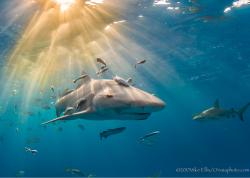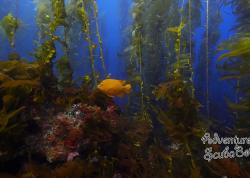What I Learned On The Anilao Photo Workshop
The little things I learned in Anilao that made a big difference in my underwater photography
By Nayan Savla
I recently took a two week vacation to the Philippines for diving, the first half of which was a
photography workshop organized by the Underwater Photography Guide.
It's been only about a year since I started shooting with a dSLR and I love my Canon T1i, even though it's ancient. I also use a
Tokina 10-17mm fisheye for
wide-angle and have a Tamron 60mm with 1.4x teleconverter for
macro shoots.
Here are some things I learned during the photo workshop.
1) Using ISO to shoot at a higher f stops:
I usually never play around with my
ISO, but I found that by increasing the ISO I could shoot at higher
f stop and control the lighting in my photos much better.
I normally set my camera to 100 ISO and forget about it, but I took some pictures with ISO 200 and was happy with them at the higher f stop, so I've started to mess around with my ISO a bit more than usual.
This has especially helped me while taking
sunball shots, and I'd have never thought to do this before the workshop.
F 11, ISO 200 10mm 1/200 tokina 10-17 fisheye.
2) Strobe positions:
Strobe positions are very important, especially while shooting wide-angle. There have been so many times that my shots would show
backscatter around the edges, but I found that by just moving my strobes backwards I could easily eliminate it.
If I had known this during my North Carolina trip last year, I would have been a little less frustrated while taking my shots.
F 5.6, ISO 200 10mm 1/125 tokina 10-17 fisheye.
I wish I had a before and after comparison, but this shot was saved by moving my strobes back. There is still some backscatter on the right but, as I mention below, patience is something I'm working on.
3) Using servo focus mode:
I have always shot using the focus lock, where I press the shutter halfway and wait for the camera to focus and then take the picture, but with a 1.4x
teleconverter on the camera it takes a lot more time to focus, and even though I can see that the subject is in focus it tries to focus again!
This got really frustrating, to the point where I would normally just give up on the shot. Then I found that with the continuous AF focus mode I didn't have to wait for the camera to lock focus and then take the shot. I can still press the shutter halfway so that the camera focuses, but if I press it completely it will take the photo regardless of whether the camera thinks it's in focus or not.
I wish i had known about this before the mandarin fish dive where I couldn’t get a picture of them mating because the camera wouldn't focus fast enough in the red light.
4) Composition:
Most of my
compositions have been without any specific theme or method in mind, but it was good to learn the different ways to compose a picture and how to make it better for different subjects.
Of course it is very subjective, but it was good to know the “standard” ways to compose a shot.
5) Post processing (white balance):
When I use the red light on my SOLA the camera shoots a little warm, and because I never thought to touch the
white balance in
Lightroom the red was always still present in my photos.
It was helpful to finally figure out that by adjusting the white balance I could make my pictures appear the way I wanted them to be.
6) Taking multiple shots:
I have seen people just shoot, shoot and shoot, but sometimes get lazy and usually just take a couple of pictures of the subject and move on. I have to force myself to spend more time with a particular subject and take more shots.
One of the reasons behind this is about being courteous to other photographers, but you can let them have their time with the subject and then return when no one is waiting, which is something I've started working on.
F 9.5, ISO 100 tamron 60mm+1.4x tele convertor 1/200.
I did take a few shots of this Christmas tree worm before getting this one, though i could have lingered longer and played with the settings more.
7) Patience:
This ties into the point above - I don't wait and hang around a particular subject long enough. I've learned that once you find something interesting, don't let it go so easily. You have to be mindful of other photographers, but keep following up on it if you can.
These are some of the things I learned in Anilao through the many workshops, slideshows and just talking with Mike Bartick and Scott Gietler.
It was a really awesome experience and I would love to do it again. Life is always a learning experience, and I look forward to many more trips like these.
About The Author
You can read more about Nayan Savla and his adventures at
desidiver.com. See his entire gallery
here!
Further Reading
Support the Underwater Photography Guide
Please support the Underwater Photography Guide by purchasing your underwater photography gear through our sister site, Bluewater Photo & Video. Click, or call them at (310) 633-5052 for expert advice!




 Visit Bluewater Photo & Video for all your underwater photography and video gear. Click, or call the team at (310) 633-5052 for expert advice!
Visit Bluewater Photo & Video for all your underwater photography and video gear. Click, or call the team at (310) 633-5052 for expert advice! Bluewater Travel is your full-service scuba travel agency. Let our expert advisers plan and book your next dive vacation. Run by divers, for divers.
Bluewater Travel is your full-service scuba travel agency. Let our expert advisers plan and book your next dive vacation. Run by divers, for divers.





























